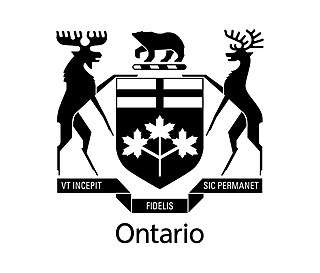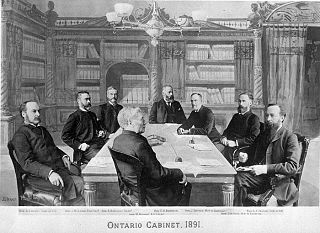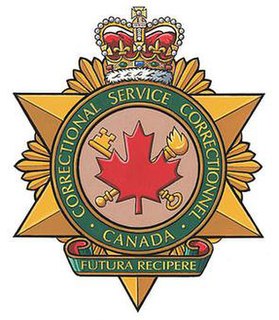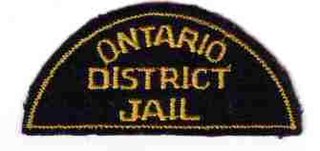| Ministère de la Sécurité communautaire et des Services correctionnels (French) | |
 | |
| Government ministry overview | |
|---|---|
| Formed | 2002 |
| Jurisdiction | Government of Ontario |
| Headquarters | 18th Floor, 25 Grosvenor Street, Toronto, Ontario |
| Ministers responsible |
|
| Website | www |
The Ministry of Community Safety and Correctional Services (French : Ministère de la Sécurité communautaire et des Services correctionnels) is responsible for law enforcement services in the Canadian province of Ontario, including the Ontario Provincial Police, correctional centres, detention centres/jails (detention centres and jails are essentially the same, except the latter are smaller), parole boards, public safety and disaster management (under Emergency Management Ontario and the Office of the Fire Marshal). The ministry was created as the Ministry of Public Safety and Security in 2002 with the amalgamation of the former Ministry of Correctional Services and the Ministry of the Solicitor General.

French is a Romance language of the Indo-European family. It descended from the Vulgar Latin of the Roman Empire, as did all Romance languages. French evolved from Gallo-Romance, the spoken Latin in Gaul, and more specifically in Northern Gaul. Its closest relatives are the other langues d'oïl—languages historically spoken in northern France and in southern Belgium, which French (Francien) has largely supplanted. French was also influenced by native Celtic languages of Northern Roman Gaul like Gallia Belgica and by the (Germanic) Frankish language of the post-Roman Frankish invaders. Today, owing to France's past overseas expansion, there are numerous French-based creole languages, most notably Haitian Creole. A French-speaking person or nation may be referred to as Francophone in both English and French.

Law enforcement is any system by which some members of society act in an organized manner to enforce the law by discovering, deterring, rehabilitating, or punishing people who violate the rules and norms governing that society. Although the term may encompass entities such as courts and prisons, it is most frequently applied to those who directly engage in patrols or surveillance to dissuade and discover criminal activity, and those who investigate crimes and apprehend offenders, a task typically carried out by the police or another law enforcement organization. Furthermore, although law enforcement may be most concerned with the prevention and punishment of crimes, organizations exist to discourage a wide variety of non-criminal violations of rules and norms, effected through the imposition of less severe consequences.

The provinces and territories of Canada are sub-national governments within the geographical areas of Canada under the authority of the Canadian Constitution. In the 1867 Canadian Confederation, three provinces of British North America—New Brunswick, Nova Scotia, and the Province of Canada —were united to form a federated colony, becoming a sovereign nation in the next century. Over its history, Canada's international borders have changed several times, and the country has grown from the original four provinces to the current ten provinces and three territories. Together, the provinces and territories make up the world's second-largest country by area.
Contents
- History
- Law Enforcement and Public Safety
- Correctional Services
- Merger of the two functions
- List of Ministers
- Security guard and private investigator licensing
- See also
- References
- External links
Its headquarters are on the 18th floor of 25 Grosvenor Street in Toronto. [1] The Minister of Community Safety and Correctional Services in the Ontario cabinet is Sylvia Jones.

Toronto is the provincial capital of Ontario and the most populous city in Canada, with a population of 2,731,571 in 2016. Current to 2016, the Toronto census metropolitan area (CMA), of which the majority is within the Greater Toronto Area (GTA), held a population of 5,928,040, making it Canada's most populous CMA. Toronto is the anchor of an urban agglomeration, known as the Golden Horseshoe in Southern Ontario, located on the northwestern shore of Lake Ontario. A global city, Toronto is a centre of business, finance, arts, and culture, and is recognized as one of the most multicultural and cosmopolitan cities in the world.
Sylvia Jones is a politician from Ontario, Canada. She was elected to the Legislative Assembly of Ontario in the 2007 provincial election, representing the riding of Dufferin—Caledon as a member of the Progressive Conservative Party.












